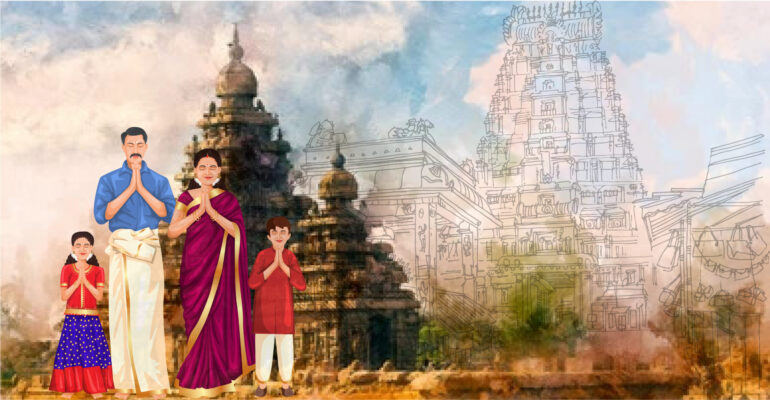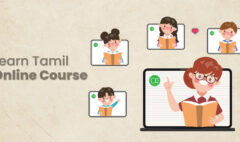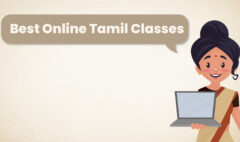How is the culture of Tamil unique?
How is the culture of Tamil unique?
Read the blog to know the Tamil civilization, Tamil festivals, the hospitality, literary works, music, dance and artist forms.
Tamil culture is ancient, and the richness can be observed in its literature, music, dance, art forms, sculpture, language, and so on. People have a strong emotional bond with the Tamil, the Dravidian language and the Tamil culture. Tamil people personify their Tamil, the Dravidian language as Tamil Annai which means Mother Annai. The Tamils always carry their legacy and their attachment to culture and beliefs is so well established that wherever Tamil people move and settle down, Tamil diaspora props up. The blog describes the uniqueness of the Tamil culture, the civilization, the evolution of Chera, Cholas, Pandya and Kongu reigns, Tamil festivals, and their attachment to hospitality, and many more Tamil people facts for kids
Tamil Civilization
The evolution of Tamil culture and civilization began much before the Indus valley civilization. The civilization was building as people in nomadic groups were building settlements across the river bank, built cities, attached a greater importance to drainage systems, and had their own worshipping practices. Tamil civilization dates back to 3rd century BC where remains of such settlements have been found recently in Keeladi and Adichanallur on the banks of Vaigai and Thamiraparani river respectively. The civilization that emerged during the Chera, Cholas, Pandya, and Kongu era remains renowned until today.
Literary Works
The literature of Tamil people is rich and the Sangam period marks the glorious pinnacle of the Tamil literature. Some of the notable literary works of the Tamil culture include the following –
- Anthologies with short lyrics and long poems –
- Eight Anthologies – எட்டுத் தொகை
- Ten Idylls – பத்துப் பாட்டு
- Thirukkural – known for its greatness preaches love, patience, and peace across the world.
- Saiva Siddhantha – Talks in deep about the human thought process
- Agananuru and Purananuru – that talk about love, war, philosophy, etc.
- FIve great epics –
- Silapathikaram written by Ilango Adigal in 1st century CE describes the tragic love story of Kannagi and her husband Kovalan.
- Manimekalai, buddhist religious work written in 5th century CE by SIthalai Sathanar emphasizes love and charity as the most important quality of human life.
- Seevaka Chintamanu by Thiruthakka Devar, a Jain monk in the 10th century CE sheds light on the forms of music, dance and other arts persistent during the era.
- Valayapathi is a renowned Jain work of the 9th century CE, and it has references to Tirukkural.
- Kundalakesi demonstrates the highness of Buddhism over Shrauta and Jainism and it is authored by Nagaguttanar.
- Ponniyin Selvan story by Kalki Krishnamurthy talks about the story of Arulmozahi varman, who became Rajaraja Chola, the great Cholas emperor.
- Cheras, Cholas, Pandyas and Kongu has a rich literary history and covers some of the exciting facts that happened during the glorious period.
Music and Dance
Bharatnatyam forms an essential part of Tamil dance and still remains one of the most renowned dance forms among the Tamils. Apart from Bharatanatyam, there are several other dance forms and some of them include the following –
- Bommalatam
- Devarattam
- Silambu Aatam
- Karagattam
- Kavadi aatam
- Kummi
- Ottan Koothu
- Oyil Kummi
- Oyilaatam
- Urumi Aatam
- Kolattam
- Poi Kal aatam
- Parai Aatam
- Mayil Aatam
Most of these dance forms have subtle movement of the body and elegant expressions that are a treat to the eye.
Coming to music, the origin of Tamil music and the scale building process dates back to the Sangam literature, where a lot of classical literature works that evolved during the period were tuned o musical forms. Pannisai is another renowned music form and is performed even today in temples and festivals. Pannisai has 72 basic octave scales and is a blend of both melodic and rhythmic structures.
Folk Music and Gaana are commonly practised in rural areas. Carnatic Music is an intricate form of music and remains the benchmark for musicians to learn and perform.
Tamil Festivals
Tamil culture is characterized by festivals and celebrations of sorts. Tamil people honour the birth of deities – and the deity is carried through the streets. People get together during Tamil festivals in large numbers and enjoy to the fullest.
The Tamil New Year begins somewhere in the mid April. People call it Chithirai Kani, and the Tamilians believe that what they see the first in the morning of the new year day would influence their mind throughout the year.
Deepavali, the Tamil festival of lights is celebrated wide. Pongal festival, or the Mahara Sankranthi is celebrated with grandeur in the mid January. People celebrate pongal festival as the harvest festival. Given that agriculture forms the major occupation of the Tamil people, during Pongal festival people worship cattles and the harvest by offering prayers to all of them.
Worshipping forefathers
Tamil people have the unique culture of worshipping their forefathers -if you get an opportunity to travel across Tamil Nadu, you might get an opportunity to see Ayyanar, Pattatharachi, Angalamman, Madurai Veeran, and so on. Tamil people treat Kula Dheivam or the family Gods as the first in their order of priority. Alagu Kuthudhal where people pierce their cheeks with smears and Poo Mithithal where people walk on fire is also common and this reveals the magnitude of devotion that Tamil people attach to their Gods.
Attachment to nature
Tamil people lead a life very close to nature.
Tamil people had a tradition of brushing their teeth with neem sticks.
The ancient culture of Tamil people had Siddha system of medicines, that has tablets, capsules, and other treatment mechanisms purely based on herbals and minerals. Their system of life had stayed away from toxic chemicals throughout the history.
The attire of Tamils were made from fine weaving. Silk sarees and silk-made costumes for occasions were common. Women wear flowers and wear silk sarees with gold jaris on their borders during festivals and important occasions.
Welcoming nature of Tamils
Tamils have a heart warming culture of welcoming people in their homes. Virundhombal is an essential part of Tamil culture and when someone comes to their homes, irrespective of whether they have already met or not, Tamils considered it as a matter of duty to greet them with water and offer food. Tamils have placed a high importance on hospitality and in avoiding conflict. Tamil people are naturally hard workers, very down to earth, and pragmatic. They give due importance to humility as a virtue.
Tamil Thai
Tamils attach extreme importance to the Tamil language that they worship the Dravidian language as a mother. There is a Tamil Thai temple in Madurai, and the presiding deity here is Tamil. It is the only Tamil in the world that has a deity for the personified Tami Dravidianl language. Tamil Thai is also depicted in various visual forms across Tamil Nadu.
Looking for more interesting Tamil people facts for kids? Sign up to our online Tamil classes at Powerkid Tamil Academy. We offer an opportunity to learn Tamil online directly from native Tamil speakers. Thele online class in Tamil is conducted in levels, and if you are familiar with the basics, you are free to proceed to the intermediate and advanced levels.








